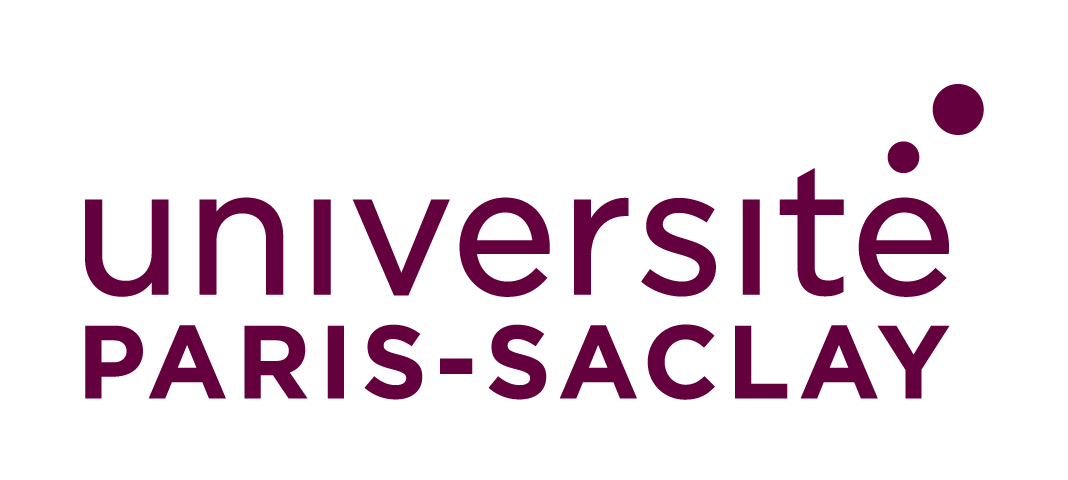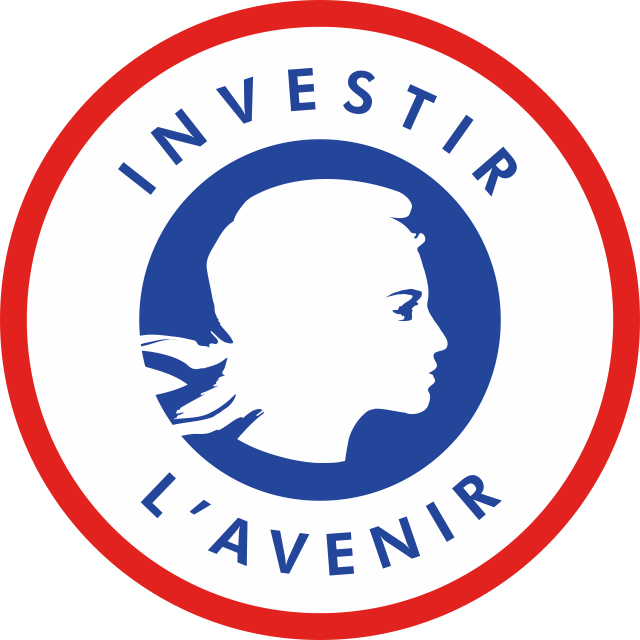Our Young Researchers
Meet the young scientists who have joined the CLand team!
Ms. Léa CREPINLéa is a PhD student at UMR EcoPub, INRAE / AgroParisTech and the Chair in Climate Economics. The general objective of this project is to have a better understanding of international soybean trade, and how it relates to the Brazilian deforestation. The approach is mainly empirical, relying when possible on quasi natural experiments, with important use of the TRASE database, with roots related to economic theory of trade and land-use change. Further, this work will contribute to the global knowledge of the deforestation factors, and be a good complement to integrated assessment models, which generally poorly represent the deforestation dynamics. |
|
Ms. Lan Anh DINHLan Anh is a Ph.D. student at LERMA/Paris Observatory under the supervision of Filipe AIRES. She is working on crop yield simulation using statistical and machine learning models. In the first application, the main objective is to measure coffee sensitivity to weather conditions and develop the statistical yield models over the major coffee-producing countries. This work is done in collaboration with Eric RAHN from CIAT, who is co-funding the project. In a second application, similar statistical models are applied for crop yield forecasting over Europe (e.g., wheat, maize, oats). Several regularisation techniques and realistic assessment tools are considered to evaluate the true reliability of the models. Finally, the work will also aim to analyze the impact of climate change on crop yield and suggest strategies for adaptation. |
|
Mr. Souleymane DIOPSouleymane is a PhD student working with INRAE (CESBIO/ECOSYS) and Cirad under the supervision of Eric Ceschia and Ronny Lauerwald and co-supervision of Rémi Cardinael. He will investigate the effect of tillage and crop residue management on albedo, surface temperature and on the energy budget in two long-term experiments in Zimbabwe. He will improve the albedo module in the soil-crop model STICS and in the land surface and crop model ORCHIDEE-CROP. His work will contribute to a better consideration of biophysical effects for climate change mitigation. |

|
Mr. Yacine DJABALIYacine Djabali has started a PhD at UMR GQE-Le Moulon in october 2020, under the supervision of Mélisande Blein-Nicolas (GQE-Le Moulon) and Marie-Laure Martin-Magniette (IPS2). His objectives are to identify genetic polymorphisms and molecular networks that are associated with phenotypic variations observed in response to water deficit and to provide novel insight into drought response mechanisms in maize. To this end, he will use a systems biology approach combining quantitative genetics and network inference on high-thoughput multi-omics data (genomics, proteomics, metabolomics and phenomics) acquired on a diversity panel composed of 254 maize hybrids grown in two watering conditions. |
|
Ms. Mathilde DUVALLETMathilde is a PhD student at the Centre International de Recherche sur l'Environnement et le Développement (CIRED), under the supervision of Patrice Dumas (CIRAD) and Tamara Ben Ari (INRAE). Her objectives are to evaluate the potential for West African countries to reach rice self-sufficiency and the possibility to continue answering their local growing demand on the international market in the scope of climate change. Several methodological tools and data are used to achieve these goals: statistic yield data analysis, hydroeconomic modelization and global agricultural product trade flow balance. |
|
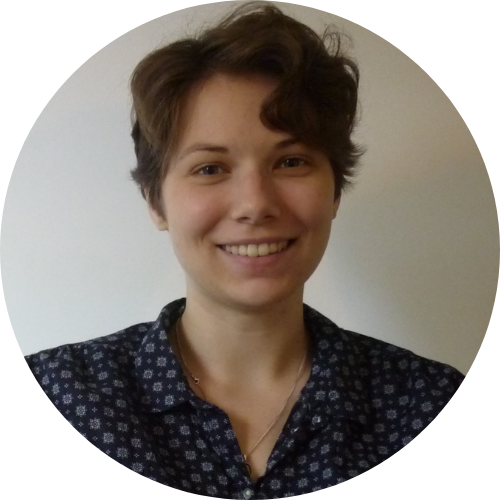 |
Ms. Maria ERNSTCities have a significant impact on their environment, regarding temperature but also regarding air quality. This impact is also observable at larger scales, such in peri-urban areas. Given this data, sustainable solutions to dampen the city's effects can be suggested in the form of urban vegetalization and efforts for preserving natural areas and agricultural land. My PhD's aim will be to quantify how urban vegetalization affects microclimate and air quality, at the scale of a city but also at a larger scale, in order to evaluate how it modifies agricultural production capacities in and outside the city. The goal will also be to quantify the impact of agricultural and natural land urbanization and urban densification on climate and air quality at a regional scale, and therefore quantifying the agricultural production potential. Practically, a valid numerical model should be developed to model heat and pollutant exchanges in an urbanized and vegetalized area. During the PhD, markers related to urban planning considerations will be developed, taking into account urban heat island effect and air quality : the long-term goal of the project is to transfer a valid modeling tool to urban planners in order to allow them to quantify the effects of urban development on environmental and public health issues. |
Mr. Arthur FENDRICHArthur Fendrich is a joint PhD student at the ABIES doctoral school (AgroParisTech) and the Collaborative Doctoral Partnership (CDP) Program of the Joint Research Centre (JRC). Arthur is working on the future impacts of soil erosion on the soil nutrient budgets for agricultural land at European scale. He is investigating these erosion impacts for different climate change scenarios through the use of the land surface model ORCHIDEE and machine learning tools. |
|
 |
Mr. Maxence GERARDMaxence is a PhD student at UR ALISS and UMR ECOPUB, both affiliated to INRAE, under the supervision of Guy Meunier and Stéphane de Cara. In the field of environmental and public economics, his PhD aims to better understand what are the optimal instruments for regulating negative externalities of livestock production, dealing with both supply- and demand-side regulation instruments. For this purpose, the project will rely on the design of stylised yet relevant theoretical microeconomic models, integrating farm heterogeneity, land use and new eating behaviours. The PhD results on the interactions between the technical adjustment of the supply and the new dietary habits will be an original contribution to the literature. |
Ms. Léna GURRIARANLéna is a CIFRE PhD student at LSCE and Atos, under the supervision of Katsumasa Tanaka and Philippe Ciais. She is working on the impact of climate change on CO2 emissions from power generation. Her objectives are to find regional relationships between climate and power demand to project the evolution of demand with climate change under different scenarios to get the CO2 emissions. She is using machine learning algorithm like random forest to train the regionals models that are applied on climate projections from the CMIP6 simulation round to simulate the evolution of power demand. |
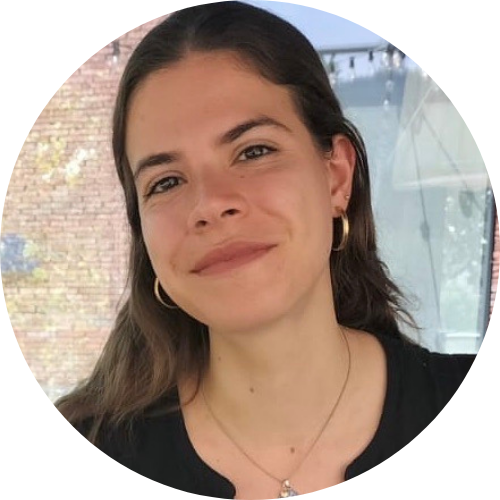 |
Ms. Julia HEBBRECHTI started working on my PhD thesis jointly at ECOSYS and SADAPT laboratories (INRAE-AgroParisTech) in January 2020. My thesis aims at developing a model of nitrogen fluxes related to agricultural land use and livestock production in France and further European countries. This model will be used to study the link between agricultural production, its environmental impacts and the provision of ecosystem services in order to soften trade-offs and enhance synergies. For more details, please visit his LinkedIn Profile. |
|
Mr. Alexis JEANTETAlexis is a PhD student at UR HYCAR, INRAE (formerly IRSTEA), working on climate change impacts on French subsurface drainage systems. Subsurface drainage is a hydraulic system used on soils with waterlogging issues to evacuate excess winter water. Drained soils represent 10% of the total arable soils, corresponding to about 20% of French total surface cereal crop. Alexis will use hydrological modelling with the SIDRA-RU model fed by climate projection scenarios to estimate future hydrological trends of the subsurface drainage behaviour in France. The strategy will be to compare hydrological indicators from a historic period (1975-2004) with indicators established from climate scenarios (2006-2100) and following these evolutions to characterize the future hydrological behaviour of subsurface drainage systems. Under the CLAND project, he will provide guidelines for farmers and stakeholders in order to help them in their activities under climate change and to preserve water resources by improving the water quality from subsurface drainage. |
|
Ms. Asma JERRAYAsma, a PhD student at INRAE Nouvelle-Aquitaine and working at ECOSYS Grignon, has started her PhD in January 2021, under the direction of Abad Chabbi (INRAE ECOSYS, Grignon) and the co-direction of Raïa-Silvia Massad (INRAE ECOSYS ,Grignon) and Xavier Le Roux (Centre for Microbial Ecology, NRAE - CNRS, University of Lyon 1). Asma will be working on the trade-offs between soil carbon storage and nitrous oxide emissions. To study these trade-offs, Asma will carry out field and laboratory experiments and test and run model simulations using PaSim and CANTIS. In summary, this highly multidisciplinary PhD topic will provide new knowledge to better understand the links between the quantity and quality of SOM and N2O fluxes in order to reduce GHGs without compromising food security and the sustainability of agro-ecosystems. |
|
Mr. Lucas LEVERNELucas is PhD student in biology at CEA Paris-Saclay, under the direction of Anja Krieger-Liszkay at the I2BC, and of Fabienne Maignan at LSCE. He is working on the effect of abiotic stress on photosynthesis, in particular on drought stress and high temperatures. He works on one hand of the regulation of photosynthetic electron transport and protection against high light stress at a molecular scale. Until now, he performed mostly chlorophyll fluorescence measurements to monitor the effect of the two stress conditions on wild-type plants and on mutants affected at certain regulation mechanisms. The aim is to collect a data set that allows better description of the so-called non-photochemical quenching (NPQ) of chlorophyll fluorescence. At LSCE, he will exploit these data to calibrate the ORCHIDEE land surface model, which can use satellite estimates of ecosystem fluorescence to better simulate the continental gross primary production at large scale. The aim is to better define the NPQ parameter that is one of the variables of the model. |
|
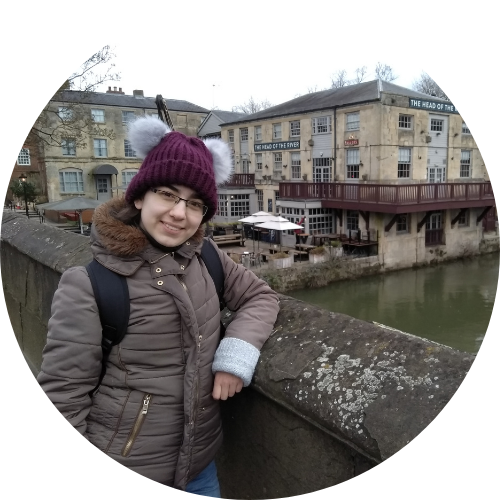 |
Ms. Célia LOUGMANICélia is doing a PhD at GQE-Le Moulon lab, under the supervision of Amandine Cornille, Karine Alix and Véronique Decroocq. The aim of her work is to assess the genomic vulnerabilities to global change of crop fruit trees and their wild relatives, using the Prunus genus as a model system. She will use nucleotide and transposable insertion polymorphisms to integrate landscape genomics and niche modelling. Using the results, climate-adapted varieties or traits in wild populations might be identified in order to help the development of future breeding programs in a context of global change. |
Mr. Mubarak MAHMUDMubarak is a PhD student at Laboratory ESE, working under the co-supervision of Laure BARTHES, Stéphane BAZOT, Paul LEADLEY and Nicolas DELPIERRE. He started in November, 2020. The objective of his work is to study the extent of nitrate leaching and the strength of its recovery by trees in agroforestry as well as the different fates of 15 N mineral fertilizer applied to the field. We hypothesize that the deep root of the tree associated with their microbial biomass can retain a part of the fertilizer added to the crop and alleviate the risk of nitrate leaching. He will use several models in combination with observational data to validate his hypothesis. |
|
Ms. Lucie PERRINLucie is a PhD student at the Centre International de Recherche sur l'Environnement et le Développement (CIRED), under the supervision of Patrice Dumas (CIRAD) since November 2019. Her goal is to study the diversity of ruminant farming systems over the world in order to evaluate their environmental impacts through the elaboration of an improved ruminant system typology and modelization. This work will provide an overview of the diversity of ruminant systems at a global scale and their links in order to identify and assess systems with the least impact on their environment. |
|
Ms. Roxane PHOTINODELLISRoxane is a PHD student in environmental economics at UMR Economie Publique (INRAE/AgroParisTech), under the supervision of Laure Bamière and Stéphane De Cara. She investigates the cost-effective implementation of agricultural practices aiming at reducing GHG emissions and sequestering carbon in soils, in France. The approach is based on economic modelling, accounting explicitly for the dynamics of C sequestration, the uncertainty inherent to SOC sequestration, and the cost and abatement potential heterogeneity of the various practices. Her work will contribute to the design of cost-effective mitigation policies. |
|
 |
Mr. Edouard PIGNEDEEdouard is a PhD student at UMR EcoPub, INRAE / AgroParisTech and the Chair in Climate Economics, under the supervision of Philippe Delacote and Raja Chakir. His PhD project aims at understand the socio-ecological mutations of the agricultural sector of Sub-Saharan Africa coping with increasing and intensifying weather shocks, in the context of climate change. First, he will assess the impacts of weather shocks on inequalities and inter-sectoral mobility, using household survey and census data, in an empirical approach. Then, a theoretical model will be built to understand to what extent agroforestry could enhance the adaptive capacities of socio-ecological systems facing weather shocks. The general objective of this thesis is to better understand the link between climate change and adaptive capacities of socio-ecological systems to cope with inequalities, poverty and food insecurity. |
Dr. Yang SUYang Su did his PhD at UMR ECOSYS, INRA / AgroParisTech, currently he worked on the environmental and agronomical impacts of land-based climate change mitigation measures under climate change trend through deep learning approaches such as random forests and deep neural network (DNN) algorithm. For more details about him, please visit his LinkedIn Profile. |
|
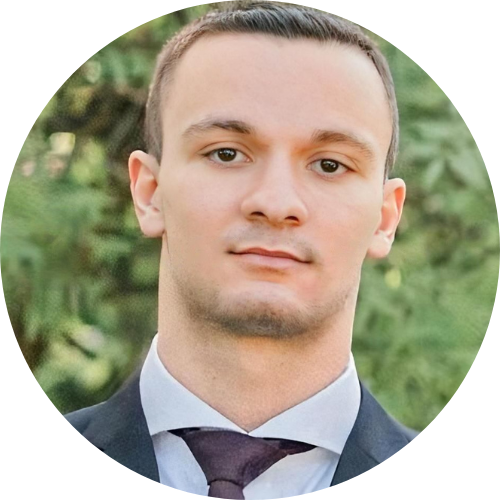
|
Mr. Florian TESTEFlorian is a CIFRE PhD student at MIA-Paris (AgroParisTech) and Atos; he works under David Makowski's supervision. This thesis aims to develop and test a methodological framework for predicting global agricultural commodity price variations based directly on high-resolution satellite data. If successful, the proposed approach will allow the prediction of price variations in real-time, avoiding the use of regional agricultural production and demand values, which are often unavailable and uncertain. Our approach will be based on machine learning algorithms that identify critical features of satellite images with solid predictive capabilities. |
Ms. Ruizhen WANGRuizhen is a PhD student at INRAE UMR SADAPT. The general objective of the project is to explore, through a modelling approach, the trade-offs among animal production, emissions and land use impact from livestock sector, via one connecting factor: animal dietary composition. Her first work is to develop a model of animal body growth to estimate animal weight gain based on diet quantity and composition. The model will be integrated with emission model and crop-based land use model to examine the impacts on animal production, emissions and land use. Trade-offs will be explored through simulating scenarios of different animal diets and with different combinations of ruminants and monogatrics. |
 |
Our Former Researchers
Meet the scientists who have supported the CLand project!
Dr. Maxime BRIEREMaxime did his PhD at ESE lab. The aim of his work was to adapt and validate a flux model to different tree densities of the sessile oak and the Douglas Fir tree species. Using the results, some insight might be given to ONF, who is co-funding the work, in order to adapt the forest management in a global change context. |
|
Dr. Elisa BRUNIElisa did a PhD in soil modeling, working between LSCE and ECOSYS under the supervision of Claire Chenu and Bertrand Guenet. Her PhD consisted in estimating the biomass inputs that need to be brought to the soil to reach a soil organic carbon storage increase of 4x1000 per year. She used several soil organic carbon models to estimate the uncertainties related to the different models at global scale and at local scale for France and China. |
|
Dr. Ivan CORNUTIvan did his PhD at ESE laboratory in Orsay. He worked on using a process-based modelling approach to assess the impact of mineral cycles on stand growth and ressource-use in tropical Eucalypt plantations. This work was done in collaboration with CIRAD lab Eco&Sols in Montpellier that has obtained important amounts of data on various fertilisation experiments, conducted in Brazil. |
|
Dr Thais DINIZ OLIVEIRAPostdoctoral research at Centre International de Recherche sur l'Environnement et le Développement (CIRED), Thais worked under the CLand project to evaluate the prospects of land-based mitigation options for future decarbonisation of the global economy. She has expertise in climate policy analysis particularly related to carbon pricing proposals for developing countries, international trading, economic modelling and sustainability research. |
|
Dr. Joao Pedro DOMINGUESJoao was a postdoctoral researcher at CIRED . As part of the CLand Convergence Institute, his work aims to estimate the production cost of primary biomass from lingo-cellulosic sources. His results will feed technico-economic or integrated models to assess the feasibility of scenarios of large-scale bioenergy development at global scale. |
|
Dr. YuanYuan HUANGYuanyuan was a postdoctoral researcher on the CLand project, exploring the zone between Nationally-Determined Contributions of Parties to the Paris Agreement, UNFCCC inventories in the sectors of Agriculture, Forestry and Land Use and scientific understanding of N2O emissions to propose practical land-based N2O mitigation strategies. |
|
Dr. Anna LUNGARSKAAnna was a postdoctoral fellow at UMR Economie Publique INRAE/AgroParisTech and her research is focused on climate change impacts on agriculture, the possible adaptation of farmers, and the resulting effects in terms of land use change. It involves also evaluating different public policies addressing major environmental issues related to water pollution and climate change mitigation. The empirical studies are based on econometric models combining data from statistics and mathematical programming models. Within CLAND, her current activity is to 1) explore the effects of climate and land use change on ecosystem services in France; 2) assess the effects of reducing by half the quantity of mineral nitrogen used by European union farmers in terms of agricultural production, pollution, carbon storage, and biodiversity. |
|
Dr. Chunjing QIUChunjing was a postdoc at INRAE and LSCE. She was working on modeling of peatland hydrological and carbon dynamics with the ORCHIDEE land surface model. Under the CLand project, she modeled carbon sequestrations by intact peatlands and carbon emissions due to agricultural use of peatlands, to assess the role of peatlands in the global carbon cycle and in climate change mitigation. |
|
Dr. Corentin PINSARDDuring his PhD, Corentin developed a modelling framework to assess the resilience of farming systems across Europe, at INRA, SAD APT research unit. As part of the CLand project, in its Challenge 2, he found ecological production functions at French and European scale from actual data and then assessed the supply of ecosystem services in different scenarios of land use change and climate change. |
|
Dr. Yong SHIYong Shi has a background in mathematical modeling and optimization. His research interests mainly focus on combinatorial optimization, evolution computing, and their applications. Yong applied his computational skills to the optimization of land cover and land use in Europe for addressing trade-offs and synergies between ecosystem services under climate change scenarios. |
|
Dr. Yitong YAOYitong did PhD on "modelling interactions between drought and nutrients in forest and their impacts on forest productivity and tree mortality". Her work focused on improving the plant hydraulics architecture in ORCHIDEE-CAN and better predicting the tree mortality with loss of water conductivity from the improved model. |
|
Dr. Rotem ZELINGHERRotem Zelingher did her PhD at UMR EcoPub, INRAE / AgroParisTech. Her doctoral thesis dealt with price forecasting of agricultural commodities, based on regional productions. The research results revealed contrasted impacts of different producing regions on the world price of crops. It also proved the ability of data-driven models to forecast commodity prices of major crop species. She used different statistical and machine learning methods, and her work relied on open-access agricultural statistics. This thesis was part of the Challenge 3 project. |

